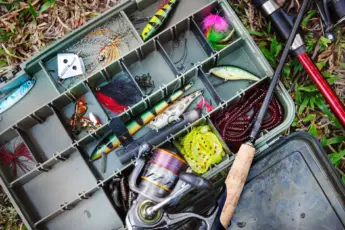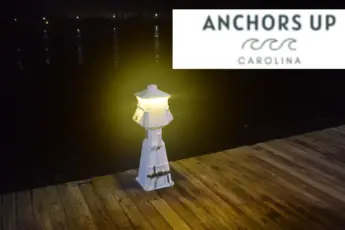If you have ever wondered whether or not you can keep that South Carolina blue crab you catch, you are in the right place! Here is what you need to know about the South Carolina blue crab regulations.
South Carolina Blue Crab Regulations
The blue crab fishery dates back generations, but that doesn’t mean its an overfished crustation in the south. Ranging from the Gulf of Mexico up to Novia Scotia, crabs are plentiful along many coastal regions including South Carolina, thanks in part to South Carolina crabbing regulations.
Blue crabs are harvested by both the recreational harvester in addition to a robust commercial fishery. You and your family can head to a local dock, creek, or bridge and gather a dinner to feed the masses. Here in South Carolina, it’s important to follow the state’s regulations to comply with the law.
Fishing for blue crabs is considered easy by most and, particularly, during seasons when they are active. The meat is extremely sweet and makes for an entertaining dining and social experience.
As we begin to look at the regulations, understand how to tell the difference between many terms broken down by harvesting laws. Knowing these terms will help you better comply with SCDNR blue crab regulations.
How To Tell If A Blue Crab Is A Male Or A Female
Determining how to tell a male versus a female crab is simple and is important to best follow SC crabbing laws. Flip the crab over and for these distinguishing features.
- Males have a more T-Shaped belly. When the claws are pointed up in the air, you’re looking at an upside-down T.
- Females are rounded shape on the bottom; however, recognize how to identify an egg-bearing female.
- Female crabs with eggs must be identified quickly, when the crab is on its back, the belly will have a spongy red covering on the rounded underside. If eggs are present, the blue crab must be released to follow the blue crab regulations South Carolina.
Do You Need A Fishing License To Catch Blue Crabs In SC
Whenever you’re fishing in the state of South Carolina, anyone above the age of 16 years old must obtain a fishing license. To learn more, read about the importance of obtaining a South Carolina saltwater fishing license before crabbing. Purchasing a license is the first step to following the SC crabbing regulations.
Trap Regulations for Blue Crab Traps in SC
- If you’re using traps, you are not allowed to deploy more than two at one time unless you obtain a commercial fishing license. This is very important when it comes to South Carolina crabbing laws.
- The float attached to the end of the crab trap line on the surface must contain your name, license number, or address if left unattended.
- The trap cannot be extended beyond a period of five days without being checked. This gives you an excuse to head back out on the water.
- You cannot let a trap sit in dry water at low tide. Check the tides to be sure it’s sitting in water.
- If you’re launching your boat, head at least 200 yards away from public docks or ramps to set the trap. It would be best if you did this anyway because other areas will hold a more significant population.
- The float for a deployed trap must be colored in yellow.
- Be sure the float is five inches in width or diameter and shaped rectangularly, conical, or cylindrical.
- Should the float be spherical or round, the float must measure at 6 inches diameter.
- A float must be made of plastic foam, Spongex, cork, plastic, or PVC.
- Don’t let your line float; a crab trap line must sink and not remain at the surface.
- For some reason, if you happen to catch a blue crab in freshwater, you’re required to release it.
How Big Does A Blue Crab Need To Be To Keep It
Once the trap is loaded up with crab, measure each crustacean carefully. You must bring a measuring device to comply with the SC blue crab size limit.
When looking at the crab from the top side of the shell, notice each point that extends out. This distance must bridge five inches or greater to be deemed a keeper. Flip the crab over and make sure no eggs are attached on for the ride. Release these females. A recreational harvest limit does not exist in South Carolina. Following these basic rules will keep you in compliance with blue crab regulations SC.
Conclusion
The SC blue crab regulations are straightforward to follow. When you’re out fishing, the reward of catching blue crabs results in a tasty delight for you and the family. Ask around the community for tips and tricks on catching blue crabs; locals will gladly help because they are common in these waters. Once your bushel is loaded up, call up your friends and loved ones for a social table side gathering that is sure to please the pallet.







